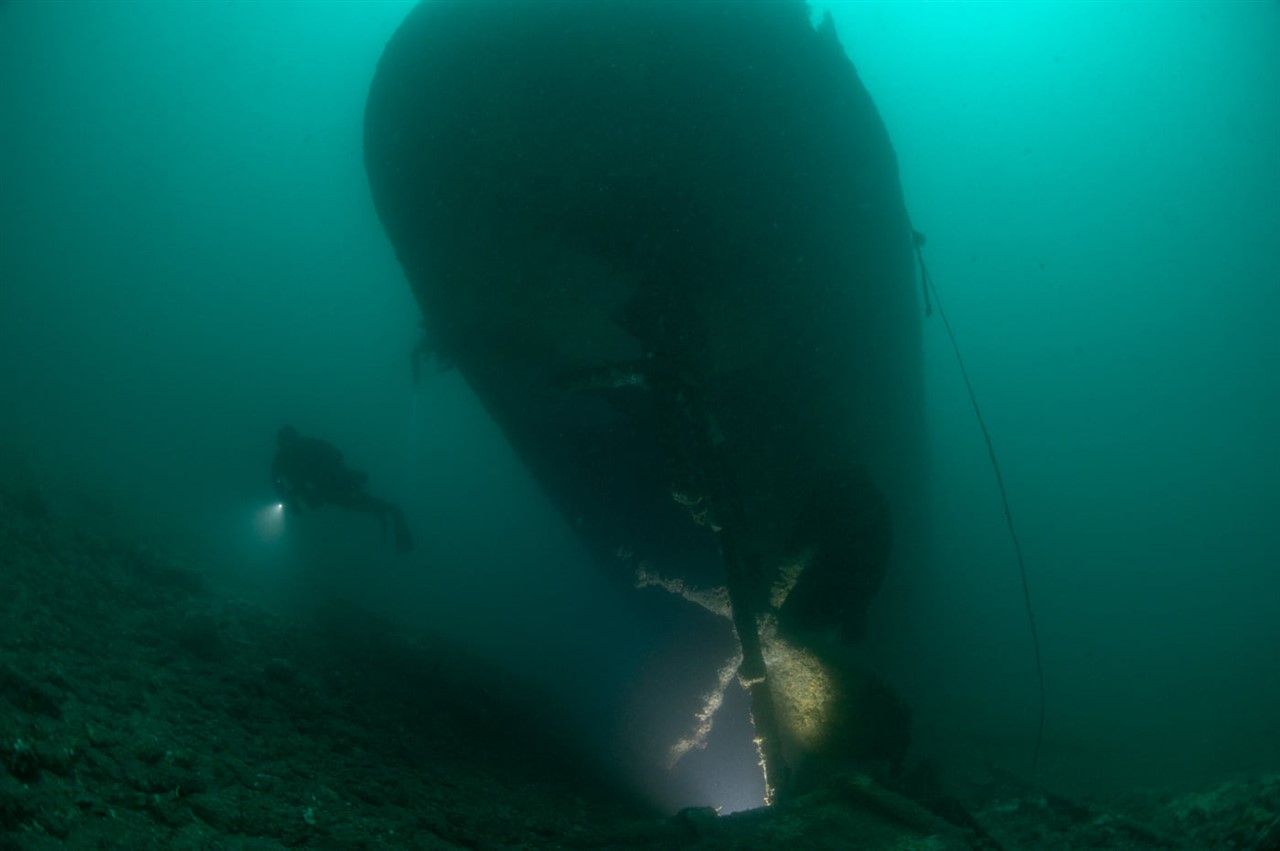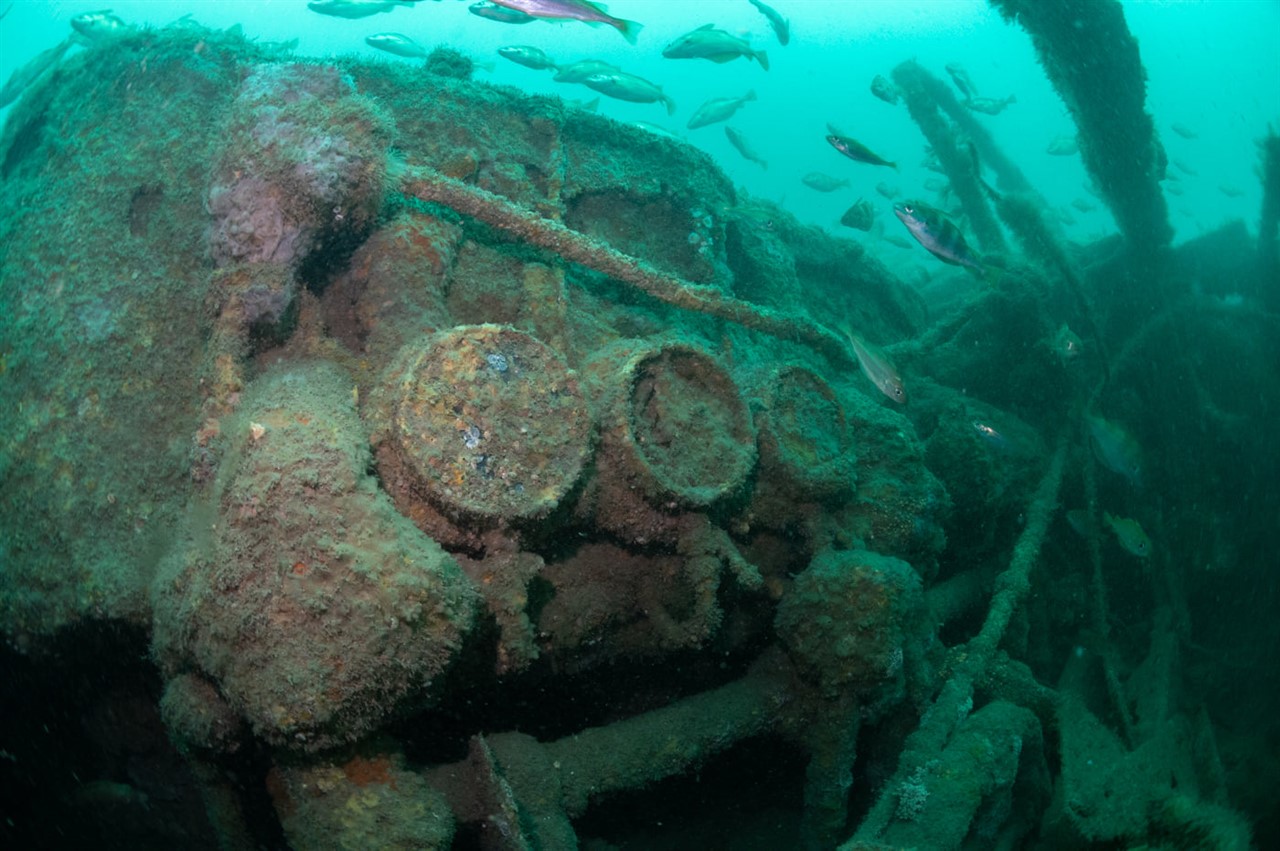Diving - The adventure continues!
More 2020 diving - HMT Arfon
With a 30M dive on the Kyarra completed, John, Julian and I turned our focus to a dive on the protected wreck, HMT Arfon.
This dive needed a bit of thinking about as it's at 44M and to allow a reasonable time on the wreck at that depth we were going to have to employee some Advanced Decompression Procedures.
We've all been trained in this, but certainly Julian and I hadn't done a great deal of practice since - I, in fact, had only done the 2 dives comprising the course!
We spent some time with the BSAC tables and the planning software on our computers, being somewhat taken aback that there was such a big difference between the two!
However, by 14 July, we felt reasonably confident that we had a good understanding of the plan for the dive and the procedure for carrying it out.
As on the Kyarra dive the week before, we travelled out with Bryan on Viper, but the weather was flat calm, the sun even broke through the thin cloud as we arrived at the site and Rick, a rebreather diver, dropped in first to confirm the shot was suitably positioned.
It didn't take long for the 'pill' (a small plastic float) to appear to confirm that it was and we all piled in, me carrying my new 7L stage, as well as my twin 12L cylinders, to carry out the decompression stops on a 50% O2 mixture to speed the process of decompression (ridding you body of excess nitrogen - Normal air has only 21% O2).
We jumped in and started to descend, but despite having an extra cylinder I could only descend a few metres - I let myself drift up slightly and was able to free myself from the small buoy attached to the shotline.
By this point John and Julian were some distance down the shot, but even at around 25 to 30 metre down I could see a dark shape below them. I figured this couldn't be the wreck, so started to ready my torch, expecting dark conditions, but as I carried on down, I saw the shape form into the unmistakable shape of a small ship's stern!
Even at 40M the light was so good you didn't really need a torch to see the ship and the visibility was crystal clear out to at least 10 metres.
It was all you could really wish for of a UK wreck dive!
Glenn Day shot the above video on our dive
The wreck itself is of an Armed Trawler sunk by a German mine in WW1. The wreck is classified as a war grave as the sinking led to fatalities, 10 of the 13 crew perishing, so only a very limited number of dives, under licence, are allowed per year.

Rick Ayrton took this great shot of the stern on our dive
The shot placed us directly by the stern, alongside the large single propellor. The rudder seems to have gone, possibly a wooden one that has rotted away, but the stern gunwhale and hull are still impressively intact and it looks from this point like the ship has been moored neatly underwater.
Most of the hull is intact and we swam around to the port side and along at deck level, passing (without realising quite what it was) a 6 pounder gun.
There were a lot of Congers, one particularly large, to be seen, large shoals of Bib, as you often see on wrecks below 20M and some crabs. I didn't see an Lobsters but there was at least one on board as Glenn's video revealed.
I dropped down to the seabed by the bow and than around it to find the starboard side is missing, where the blast occured.
From there we headed back over the deck, passing over winches, the boiler and engine and back to the stern before moving back down the centre of the deck and launching Julian's DSMB to start our ascent.

Rick Ayrton's shot of the engine with gauges and some of the fish
Our planning had suggested we would be doing stops at 12M, 9M and 6M on the way up, but, due to spending more time at less depth (the ship standing further off the seabed than we expected), my computer had a first stop at 9M.
John and I were both using 51% gas, so he indicated to me to switch at 20M or so - Oxygen, you may not know, is toxic above certain pressures and this was the safe depth for us to switch to 50% - Julian had 64% in a smaller cylinder, so needed to switch at around 15M.
I did so and we ascended to 9M, where I had a 2 minute stop, I then ascended to 6M where my computer informed me I needed a 16 minute stop, which passed without any issue and,once John's was completed, his being the longest stop, we all ascended back to the boat where the smooth conditions made getting back aboard far easier than after the Kyarra dive the previous week!
If you can't dive the Arfon yourself, you can get a great idea of the wreck from the NAS's Arfon Dive Trail website.
It had been a great dive, all agreed, with stunning vis on a remarkably intact over 100 year old wreck and we were all happy that our ADP dive had gone according to plan.
At 44M, it was also Julian and my deepest ever recorded dive!
Read some more of my diving experiences, by clicking the icons below.


